Elderberry black: description, varieties, planting and care
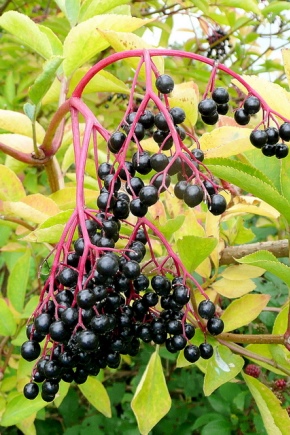
Today, in summer cottages, you can often find luxurious elderberry bushes. These plants have incredibly lush inflorescences, an unusual smell that drives away harmful insects, as well as fruits that have unique medicinal properties. In this material, you will get acquainted with the features of growing black elderberry, namely: with a description of this species, its popular varieties, as well as the features of planting and caring for this garden crop.
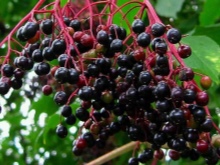
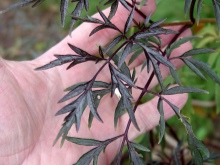

Peculiarities
Black elder (or Sambucus nigra) is a deciduous tree-like shrub of the genus Sambucus and the Adox family. Today, this garden culture grows in areas with subtropical or temperate climates. Elderberry garden plants or wild shrubs can be found in North Africa, practically throughout Europe, as well as in Russia, Ukraine, Moldova and Belarus.
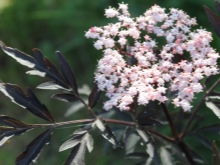
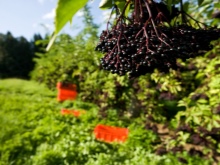
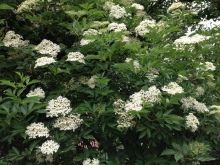
Black elderberries can have green, reddish, or purple leaves, depending on the cultivar and season. The flowering of the plant begins in early or mid-summer, and the first ripe fruits are harvested in September. Light, yellow or pinkish flowers of such an elderberry look like voluminous panicles or pyramids. The fruits of the plant have a typical black color and rounded shape, collected in large paniculate clusters.
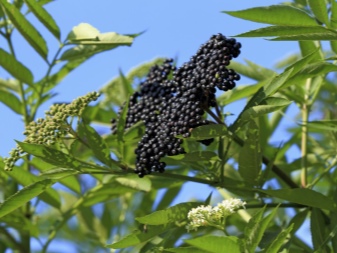
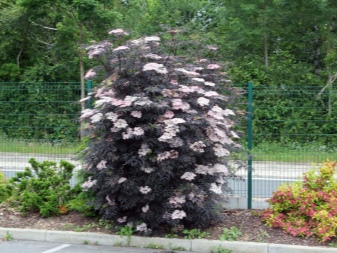
Important! Black elder bushes and trees are grown for both decorative and medicinal purposes - the fruits of these plants are widely used in the creation of folk remedies.
Varietal variety
The species of black elderberry has about 15 individual garden forms and varieties, which are actively grown both for decorative and medicinal purposes. Among the most popular varieties of black elderberry, there are several. According to the shape of the crown, they are of the following varieties:
- pyramidal or columnar - all varieties of black elderberry with an elongated cone-shaped crown;
- weeping - all garden forms with a crown adjacent to the ground.
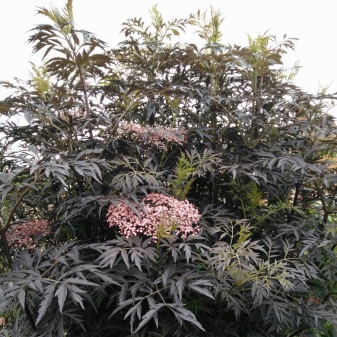

It is worth highlighting the following varieties by type, color and leaf shape:
- fern - has narrow leaves and light flowers, exuding a characteristic musky aroma;
- porphyry or dark-leaved - black elderberry trees with purple foliage and pinkish dissected inflorescences; varieties: "Black Tower", "Thundercloud", "Black Lace", "Eva", "Purple", as well as Black Beauty or "Black Beauty";
- powdery - varieties of black elderberry with characteristic white spots or a border on narrow green leaves; popular varieties: Pulverulenta, Variegata, Madonna, and Aurea with golden leaves;
- dissected-leaved (or "Laciniata") - has yellowish buds in the shape of an umbrella, as well as large narrow and divided leaves of gray-green color.
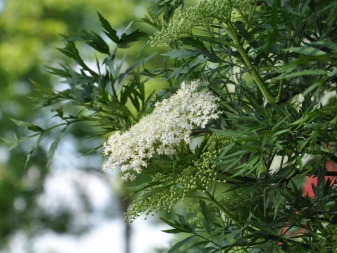


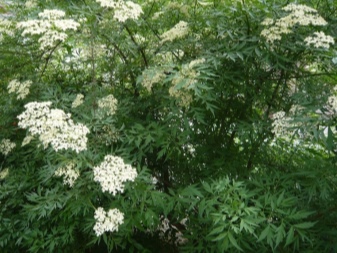
If we talk about the garden forms of black elderberry, which take root best in the Moscow region, then the following are used here: "Variegata", "Black Lace", "Golden Tower", "Hashberg" and "Aurea".
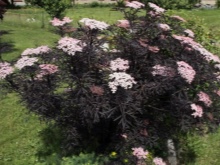
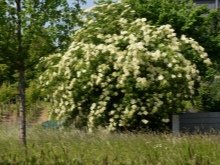
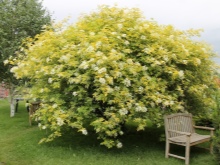
Drop off time
According to experienced gardeners, the best time to plant seedlings or bushes of black elderberry in open ground is spring (from early March to mid-April) or autumn (from late August to late September). In the latter case seedlings will need additional shelter, which can be plastic or glass transparent containers.
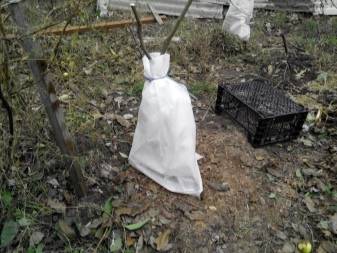
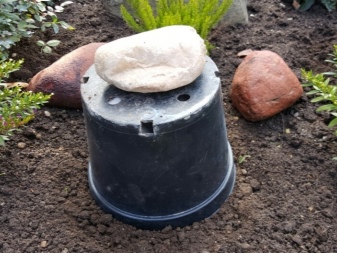
How to plant?
The plant's immunity, the abundance of its flowering, as well as the rate of formation of a strong root system will depend on the competent planting of any garden culture. In the process of planting black elderberry, pay attention to several recommendations that will be equally true when planting black elderberry in the spring and autumn seasons.
- Most varieties of black elderberry require a huge amount of sunlight for active flowering, so this garden culture should be planted in an open area, preferably on the south side of the garden. During the period of active growth, seedlings of black elderberry emit a very characteristic and not particularly pleasant smell, which will effectively drive away flies, so the plant can be planted not far from the cesspool.
- If we talk about the type of soil, then black elderberry takes root best on neutral soils with weak acidity - moist loams are best suited here. If the soil in your garden is too acidic, it should be treated with lime mixtures like dolomite flour at least six months before planting the elderberry.
- When choosing the size of the planting pit for planting black elderberry seedlings, you need to focus on the age of the seedling itself. If this is a one-year or two-year-old bush (it is these black elderberry bushes that are usually recommended to be planted), then the depth of the hole should be at least 80 cm, and the width should be at least 50 cm.
- To create the most nutritious soil for this plant, you need to combine the top sod layer of soil with 30 g of feces. fertilizers, 50 g of phosphate and about 6-7 kg of humus. The whole mixture must be thoroughly mixed and poured into the hole about 2/3 of the total amount of the mixture. When planting an elderberry bush in a hole, the soil poured into the hole is loosened again, then a seedling is installed in the hole. The roots of the bush should be positioned so that they look in different directions and do not interfere with the growth of each other. After that, the roots of the plant are first filled with the remaining mixture, then the remaining free space up to the root collar, which should rise 2-3 cm above the ground.
- The soil around the planted plant must be tamped tightly, and then watered abundantly. After that, a layer of mulch is organized in the near-trunk circle; it will also not be superfluous to install a solid support for the elderberry trunk.


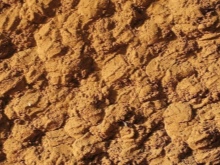
How to take care of it properly?
For competent care of black elderberry in the garden, certain growing conditions must be observed.
Watering
Black elderberry belongs to horticultural crops that can even withstand prolonged drought without much difficulty. If in the spring or summer period there are heavy rains and a normal level of humidity, then the elder will not need additional watering. In addition, to retain moisture in the root circle, a layer of mulch (rotted manure, peat, compost, needles) can be organized near the elderberry. If there has been no good rain on your site for a long time and there is an arid climate, you should water the black elderberry at least 1 time per week.
If we talk about the amount of water, then it all depends on the age of the shrub. A young elder bush up to 2 years old should take at least 1.5–2 ten-liter buckets of settled water to water. Always make sure that the soil in the elderberry circle never dries out.
Only elderberry seedlings or diseased plants need frequent watering. In addition, this shrub should not be planted near other shrubs or mature plants.

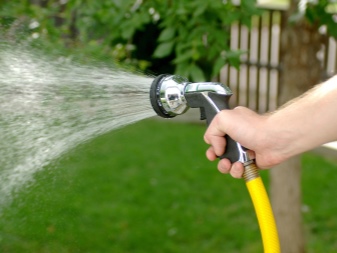
Fertilizer
Horticultural experts are convinced that black elderberry can be grown efficiently without the help of constant feeding. This rule is only true if the plant is grown in neutral soils with sufficient vitamins and minerals. If the elderberry grows on depleted and heavy soils, then at least twice a year the soil in the trunk circle near the elderberry should be fertilized. The first top dressing is carried out in the spring - immediately after winter beriberi and before the period of active growth - at this time, it is best to fertilize the soil with nitrogen fertilizers.The second top dressing should be carried out in the summer season to stimulate flowering - here organic matter in the form of rotted manure, compost or chicken droppings will show itself best.
Important! Fertilizers will not only strengthen the elderberry's immunity, but also increase the number of fruits, and also make the inflorescences of the plant more lush.

Pruning
As a rule, black elderberry pruning can be carried out up to 2 times per year. Sanitary pruning is usually carried out in spring and autumn - during this period, the gardener must remove all weak, diseased, wilted branches, as well as shoots growing inside the plant or protruding strongly beyond the borders of the crown. Anti-aging pruning should be carried out no more than 1 time in 2-3 years. It involves pruning an already mature elderberry shrub - all branches of the plant should be shortened to a height of about 10 cm. Rejuvenating pruning is usually carried out along with sanitary spring pruning until the bud swelling period. Autumn pruning is carried out already in the autumn period of wilting of inflorescences and harvesting of fruits.
Important! All cuts must be treated with garden varnish to avoid rotting.
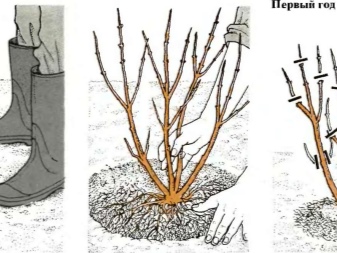
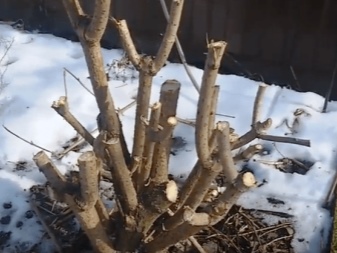
Reproduction methods
Gardeners use several methods to grow black elderberry in their summer cottages. Most often, it is the vegetative propagation methods that are used by dividing the bush, grafting or removing the bush, but some gardeners try to grow elderberry using seeds.
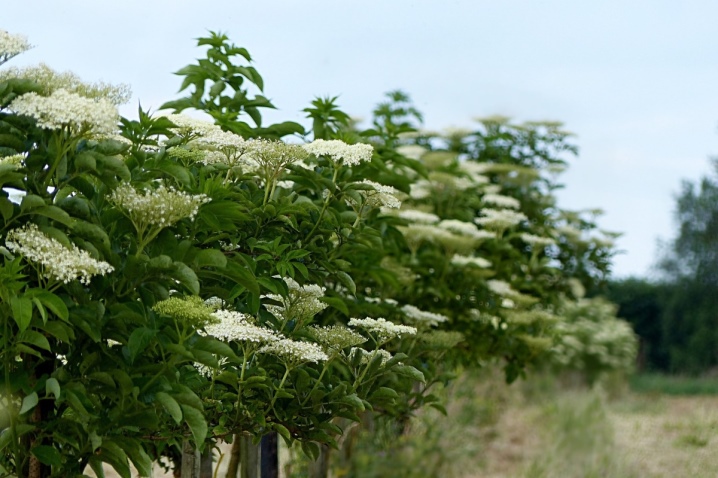
Using seeds
The collection of black elderberry seeds should be carried out in the fall - preferably in mid-September or early October. To do this, pluck a few of the ripe bunches from the bush and wipe them with a sieve. The seeds themselves should be planted in small rows keeping a 25-30 cm distance between seeds. Unlike other garden plants, the seeds of which can simply be pressed against the soil, the planting material of the black elderberry deepens to a depth of 30 cm, which will allow the seeds to survive frost.
By this method of reproduction, by next autumn you can get small elderberry bushes up to half a meter high. Today, the seed propagation method of this shrub is very rarely used - the fact is that seedlings grown from seeds do not retain the external and varietal characteristics of the parent plant. In addition, the likelihood that all the seeds will survive the winter, take root and grow is extremely small.
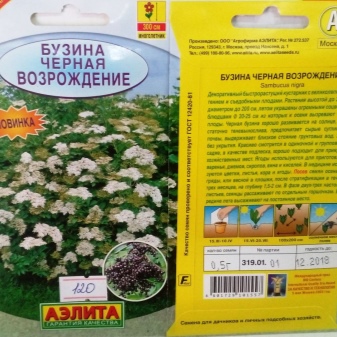
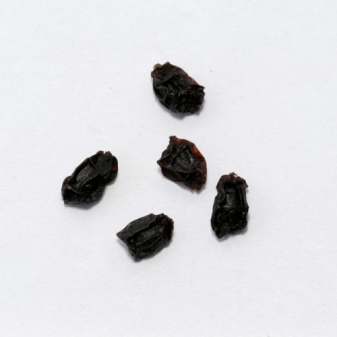
Cuttings
This method is usually used by already experienced gardeners who know a lot about caring for cuttings. The best time to harvest cuttings is early June or July. Both green and lignified shoots up to 12 cm long can be selected as cuttings. Each cuttings must have at least 2 internodes and 1 pair of healthy upper leaves. For the cuttings to take root better, they need to be planted in a mixture of soil of peat and sand and placed in a greenhouse or under a transparent film. In order for the cuttings to quickly grow a healthy root system, they should be treated with a root formation solution before the planting procedure.
In the first week, cuttings should be provided with a high level of moisture, which can only be achieved by regular watering. At the same time, condensation will regularly accumulate on the inside of the film, which must be removed, otherwise it can provoke the appearance of rot on the leaves of the cuttings. After you notice that the cuttings have begun and have acquired their own root system, they should be transplanted to a permanent place at the beginning of autumn, while preserving the mother's lump of earth. It is also possible to graft a black elderberry with the help of mature lignified cuttings, but in this case they need to be properly covered during wintering or even put in separate containers in the basement.
In this case, planting can be carried out already in the first warm spring days, but you will need to cover the cuttings with plastic or glass jars.

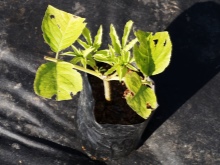
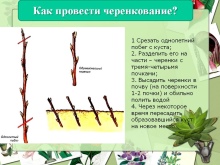
Using bends
To propagate a black elderberry using a branch, you should choose a young or lignified shoot on an already rather mature elderberry bush. Then you can use two methods.
- The first involves digging a long groove into which the layering is laid almost to the very top (which should rise above the ground), fixed with pins and covered with soil. In this case, the shoot will be able to give roots and shoots in several places at once, and you can grow up to 3 separate seedlings.
- The second method involves digging out a small single groove. The shoot is also bent down to the hole (with an open top), fixed and secured. This method is called arc bend and forms no more than 1 full-fledged bush.
If the diversion was carried out in May or June, then the lignified layers will be able to acquire full-fledged roots by the fall and even then they can be planted in a permanent place. If the shoots are young and green, then separation from the mother bush can be carried out only the next year - after they also become lignified.

Some gardeners also use the division of the bush as a way to propagate the black elderberry, but in this case there is a very high chance of damaging the root system of an adult bush. This procedure involves digging up the mother bush in the fall, freeing its root system from the soil and dividing it into separate bushes with their own shoots and strong roots. After that, the bushes are planted in separate containers and wait for disembarkation until next spring.
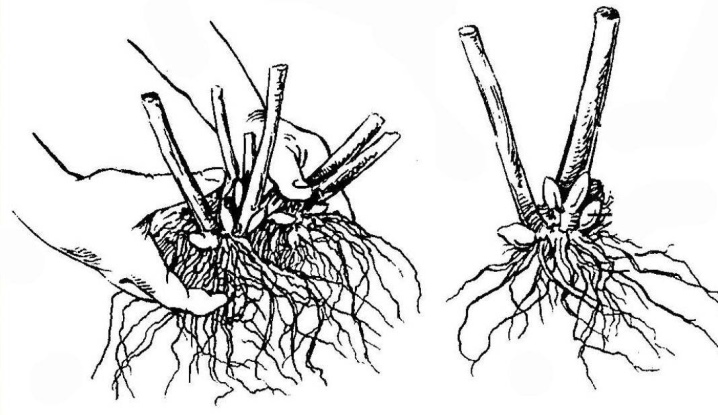
Diseases and pests
Fortunately, virtually all elderberry varieties, including the black one, are not affected by most fungal or viral diseases. Occasionally, on the elderberry, you can find the so-called powdery mildew, which is eliminated by ordinary fungicides - Bordeaux mixture or copper sulfate. The greatest danger from the point of view of diseases is precisely the black elderberry seedlings. Therefore, before the procedure for planting elderberry sprouts in a permanent place, carefully examine them and remove diseased or affected plants. Fungal and viral diseases can be transmitted through the soil that has not been disinfected or through the pests themselves. Some fungi appear on the elder after wintering, when the plant's immunity was weakened as much as possible.
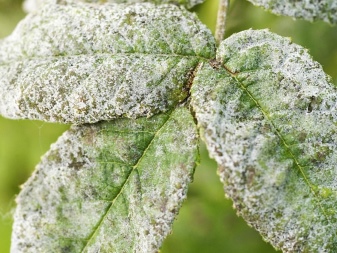

If we talk about pests or insects that infringe on the fruits and leaves of this garden culture, then here you can find ordinary green aphids or spider mites. Both pests slow down the growth of the foliage of the shrub and prevent it from flowering. Fortunately, standard insecticides such as:
- ozalon;
- voloton;
- fenitrothion;
- nitraphene;
- dimethoate;
- deltamethrin;
- lambda cyhalothrin.
If we talk about traditional methods of treating black elderberry from pests, then gardeners prefer to use infusions from onion peel or hot red pepper. The same solutions can sometimes be used prophylactically. To protect the plant from insect attacks and fungal infection, a 7% urea solution can be used.



Use in landscape design
Black elderberry can be grown in summer cottages not only because of its inflorescences and unique foliage, but also because of the medicinal properties of the fruits of this garden culture. In addition, the smell of flowering and fruits of this plant scares away many pests that can cause significant harm to fruit plants and shrubs - apple trees, plums, raspberries and even gooseberries. If we talk about the use of elderberry in landscape design, then most often it is planted along fences, near gazebos or outbuildings. In addition, this plant can effectively cover not particularly attractive areas in the summer cottage thanks to its large shrub branches.
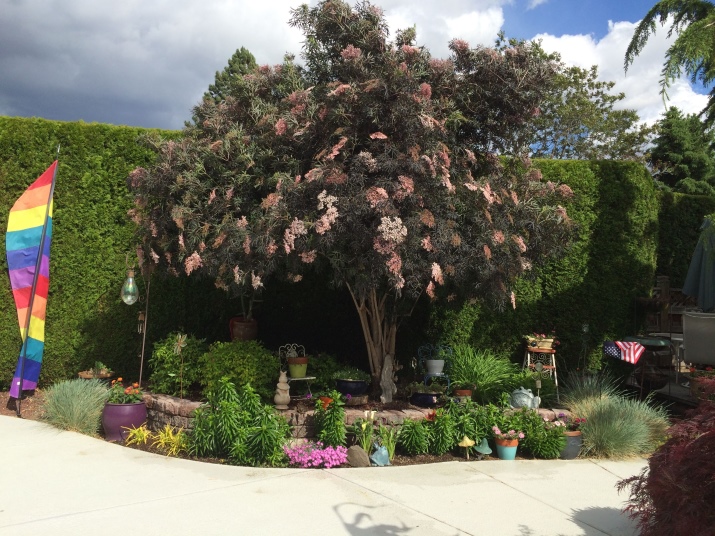
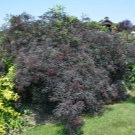
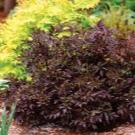
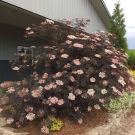
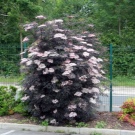
Best of all, black elderberry is combined with such plants as barberry, hydrangea, rose or rose hips, but it can also look spectacular in the form of a single bush. In addition, many gardeners prefer to grow beds of several elderberry varieties in their garden to create bright and contrasting accents. Another serious plus of black elderberry is its tolerance for regular decorative trimming.

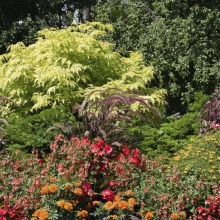
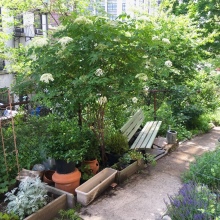
Reviews
If you look at the reviews on the Internet about such a garden culture as black elderberry, you can find an unequivocal opinion about the incredible beauty of this plant, as well as about the unique properties of black elderberry fruits, which help to cope with many diseases. Reviews of the frost resistance of adult black elder bushes deserve special attention - several gardeners claim that their black elderberry painlessly called the harsh winter in Siberia without additional shelter. According to the assurances of other gardeners, the variety of not black elderberry, but the so-called Canadian elderberry, is distinguished by such resistance to frost.
Based on the analyzed information, black elderberry is grown in summer cottages mainly due to its medicinal properties, as well as its ability to effectively drive away insects from nearby garden crops. Some gardeners claim that this shrub plant is one of the best for gardening. It is not picky to care for, it can grow even in open areas and goes well with many garden plants.
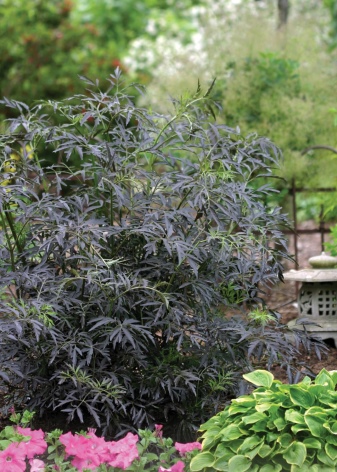
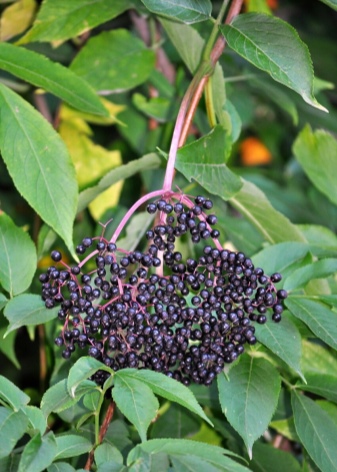
How to grow black elderberry, see the next video.































































The comment was sent successfully.